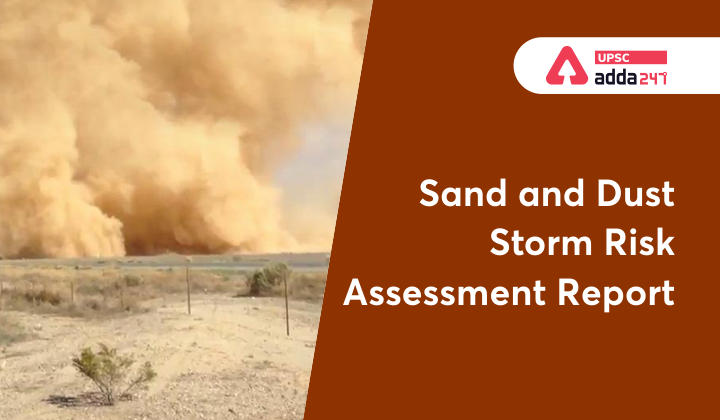Table of Contents
Relevance
- GS 3: Environmental pollution and degradation.
Context
- Recently, Asian and Pacific Centre for the Development of Disaster Information Management (APDIM) has released Sand and Dust Storms Risk Assessment Report that highlighted the global exposure of medium and high levels of poor air quality due to sand and dust storms.
- APDIM is a regional institution of the United Nations Economic and Social Commission for Asia and the Pacific (UN-ESCAP).
Key points
- More than 500 million people in India and more than 80 per cent of the populations of Turkmenistan, Pakistan, Uzbekistan, Tajikistan and Iran are exposed to medium and high levels of poor air quality due to sand and dust storms.
- Sand and dust storms contribute significantly to poor air quality in Karachi, Lahore and Delhi in ‘southwest Asia’.
- Nearly 60 million people in these places experienced more than 170 dusty days a year in 2019.
What are sand and dust storms?
- Sand and dust storms are a transboundary meteorological hazard that are common in arid and semi-arid regions and are spread across large parts of the study region.
- Major events can transport dust over great distances so that their impacts occur not only in the areas where they originate but also in communities far from the source areas, frequently across international boundaries.
Leaded Petrol Eradicated Says UNEP
Main sources of sand and dust storms
- Four major sand and dust storm corridors of Asia and the Pacific:
- East and northeast Asia
- South and southwest Asia,
- Central Asia
- The Pacific
- The region is the second-largest emitter of mineral dust.
Negative impacts
- On food security
- Sand and dust storms intensify the damages to the livelihood and food security of millions of small farmers and pastoralists, as well as damage agricultural infrastructure, directly impacting production.
- On public health
- Sand and dust storms represent a risk factor for chronic diseases such as lung cancer and acute lower respiratory infections, cardiovascular and respiratory diseases which result in premature death.
- On freshwater
- An increase in the level of sand and dust in the environment and water resources will adversely affect water quality.
- In the long term, this will lead to difficulties in providing safe and affordable drinking water for all.
- On infrastructure
- Power, water, road and other important infrastructure failures might occur as a result of sand and dust storms which can interrupt the provision of vital and critical services for the community.
- On melting of ice
- of dust on glaciers induces a warming effect, increasing the melting of ice.
Hydro-Power Projects in Himalayas
Positive impacts
- Dust storms are particularly beneficial for the areas of deposition as they can increase the nutrient content that could help vegetation in that area.
- Dust particles that carry iron can enrich parts of the oceans, changing the phytoplankton balance, with implications for marine food webs.
- Dust deposited on water bodies alters their chemical characteristics, which can trigger positive impact.
Climate change and dust storms
- Due to changes in climate conditions, many drylands are becoming drier and consequently more prone to wind erosion and sand and dust storms.
Recommendations
- Understanding the risk of sand and dust storms to various sectors in the region is the foundation for strengthening disaster risk governance to manage disaster risk.
- It also helps to identify the sectors and geographical areas with the highest priority for investment in order to increase resilience and enhance disaster preparedness.
- The transboundary nature of sand and dust storms requires regional action and inter-regional collaboration.
- Coordinated actions for data sharing among source and impact regions, as well as coordination among countries that share risks in various sectors.
- The risk of disasters in infrastructure development plans should be considered as it helps the region as a whole to avoid unnecessary disaster costs.
Also read: Children Climate Risk Index




 TSPSC Group 1 Question Paper 2024, Downl...
TSPSC Group 1 Question Paper 2024, Downl...
 TSPSC Group 1 Answer key 2024 Out, Downl...
TSPSC Group 1 Answer key 2024 Out, Downl...
 UPSC Prelims 2024 Question Paper, Downlo...
UPSC Prelims 2024 Question Paper, Downlo...




